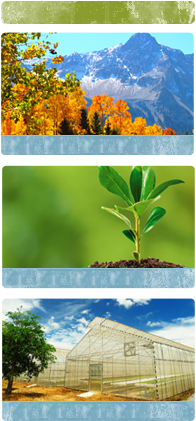Beardlip Penstemon in the Landscape

Stephen Love, University of Idaho
Scientfic Name: Penstemon barbatusCommon Name: Beardlip Penstemon
Description: Beardlip penstemon is a moderately long-lived perennial with a woody crown and leaves that are semi-evergreen in mild winters. In bloom, the plant is tall, sometimes over 5 feet, and stiffly upright. Leaves are glossy, dark green, and mostly confined to the base of the plant. The flowers are trumpet-shaped or sometimes referred to as “shark’s head like”, with the lower lip folded under, and usually bright orange-red to red occasionally found in the lavenders and shades of yellow. The bloom period is fairly long, lasting from late June into September. Beardlip penstemon is a good subject for the back of a xeric bed or rock garden. It also competes well and lasts long in a naturalized meadow planting.
Native Habitat: Locally common in southern Utah, Northern Arizona, and the southern Rocky Mountains of Colorado and New Mexico. Also found in west Texas and northern Mexico. Grows on roadcuts, rocky flats, dry creek beds and canyons among grasses, scrub, and junipers. Grows over a wide range of elevations from 4,000 to 10,000 feet.
Cultural Requirement
Soil: Tolerates in a wide range of soils, from sand to gravel to clay. Longer-lived in a nutrient-poor, well-drained soils.
Moisture Tolerance: Grows well under xeric conditions or with limited supplemental water during the driest summers.
Sun/Shade/Preference: Blooms best in full sun but tolerates part-shade.
Transplanting: Tolerates transplanting with few losses, both from pot to pot and from pot to garden. Plants do well in up to at least gallon size.
Propagation: Easy from seed. Also amenable to propagation as rooted cuttings. Basal cuttings from non-flowering stems work best. Large plants can often be successfully divided in early spring.
Maintenance (pruning, fertilization, deadheading, division, irrigation, etc): Plants will usually only bloom once and should be dead-headed after bloom to encourage new leaf growth and improve appearance. The plants are otherwise very easy to care for, requiring limited irrigation (one to four times during dry years) and minimal fertilization.
Insect, disease, or other problems: Beardlip penstemon will occasionally show late-season infections with powdery mildew. The symptoms do little damage and seldom require control measures.
Landscape Value
Use in the Landscape: Beardlip penstemon is a large and distinctly vertical plant. For this reason, it is best used in large xeric gardens as a background plant. It is very effective as a backdrop for low-to-medium-sized mounding or spreading plants. It also works well planted among small shrubs or as a vertical component of a naturalized meadow. In can be used in either naturalized or formal designs.
Foliage: The leaves are dark green, glossy, and grow mostly as a low basal mat. Leaves on the flowering stems are small and widely separated.
Flower: The flowers grow on tall, vertical stems. They usually range in color from pale to very dark orange-red or red. The flowers are tubular and with the upper petals extending forward and the lower ones folded backward. A commonly used description is that the flowers resemble a shark’s head.
Timing: June - September.
Color: Usually red or orange-red.
Fruit: An upward facing, globular capsule, with sharp, stiff lobes on top. Each capsule holds numerous seeds.
Form: Strong upright form.
Texture: Moderately course.
Ultimate Size: In bloom – 2 to 5 feet tall; basal leaf mat – 2 to 6 inches tall. Width changes with plant age but is usually less than 2 feet.
Rate of Growth: Moderately fast. The plants often bloom the first year if established early and provided with good growing conditions. The plants increase in width and number of flowering stems as they age.
Suggested Plant Partners: Plant beardlip penstemon with lower-growing yellow flowers such as Hymenoxys acaulis, Hymenoxys hoopsii, and Berlanderia lyrata. Also, nicely complements many low mounding plants, such as Oenothera caespitosa, Eriogonum corymbosum, Eregeron compositus, and many moderate-sized native clump grasses.
Availability: Many native plant nurseries carry Penstemon barbatus as potted plants. This species can also be occasionally found at traditional nurseries. Seed can be purchased from the American Penstemon Society or from many native plant seed suppliers.
Cultivars: A yellow form called 'Schooley’s Yellow'; white forms known as 'Albus', and 'Alice Handley'; other cultivars in red hues are 'Bristol Purple', 'Chica', 'Cambridge Mixture', 'Coral Gem', 'Countess of Dalkeith', 'Emperor', 'Improved Petite Bouquet', 'Iron Maden', 'Jingle Bells', 'Middlegon Gem', and others.
References:
Busco, J. and Morin, N.R. 2003. Native Plants for High Elevation Western Gardens. Fulcrum Publishing, Golden, Colorado.
Denver Water. 1996. Xeriscape Plant Guide: 100 Water-Wise Plants for Gardens and Landscapes. Fulcrum Publishing, Golden, Colorado.
Nicholls, G. 2002. Alpine Plants of North America: An Encyclopedia of Mountain Flowers from the Rockies to Alaska. Timber Press, Portland, Oregon.
Nold, R. 2008. High and Dry: Gardening with Cold Hardy Dryland Plants. Timber Press, Portland, Oregon.

